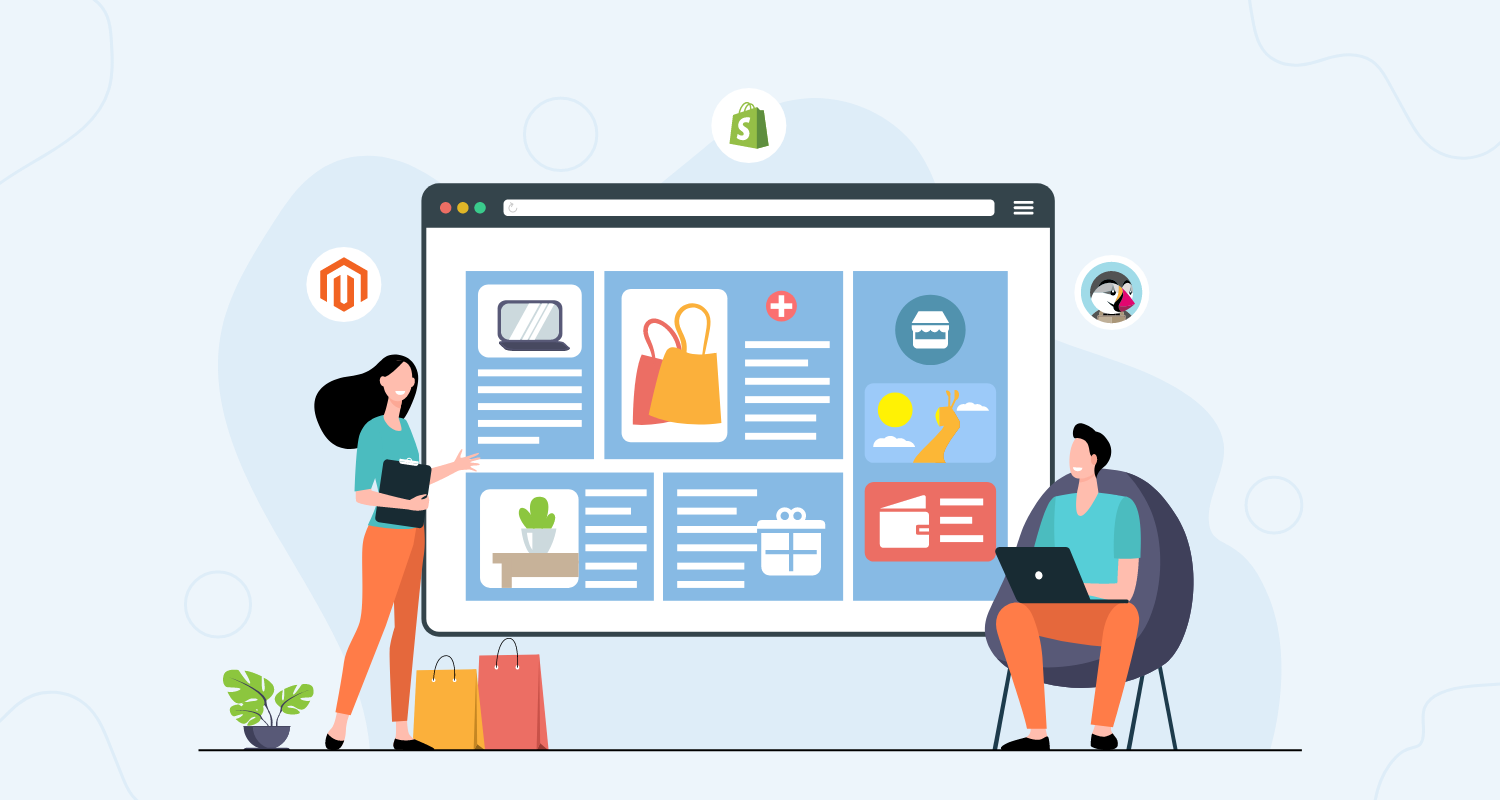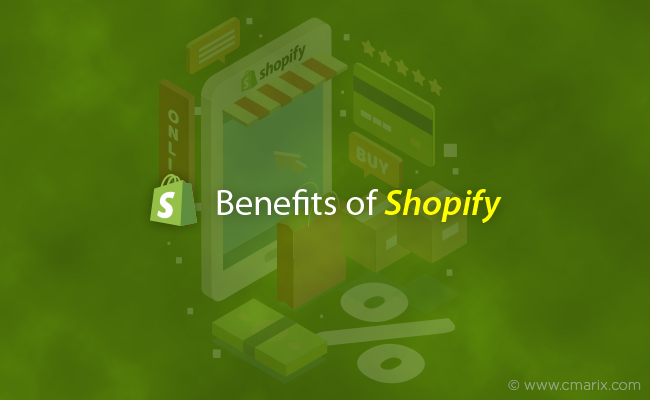Considering that e-commerce sales worldwide have reached $5.7 trillion, now is the ideal time to open an online store. It’s not always easy to decide between WooCommerce and Shopify as the best e-commerce platform.
To help you compare these two well-known e-commerce platforms, we’ve prepared this WooCommerce vs. Shopify guide. There are, nevertheless, a few notable distinctions between them.
We’ll assist you in determining whether WooCommerce or Shopify is the best e-commerce partner in this blog. We will discuss the features, cost, and how simple these platforms are to use.
Now let’s get going!
Overview: WooCommerce vs. Shopify
We must go over the fundamentals and emphasize what makes the two most well-liked eCommerce platforms different before we get into our detailed comparison of them.
What is Shopify?
With just one platform, Shopify offers an all-in-one eCommerce solution that makes it simple to set up an online store, take payments, and handle inventory.
You don’t have to be concerned about web hosting, security, caching, or other technical aspects of running an eCommerce website when you use Shopify.
What is WooCommerce?
An open-source eCommerce plugin designed for WordPress is called WooCommerce. It enables you to operate an online store using the most potent content management system (CMS).
43% of all websites are built with WordPress, the most widely used website builder on the planet. However, many people are unaware that WooCommerce development services are widely used and it is the most widely used eCommerce platform. Yes, WooCommerce to Shopify is what many developers also prefer today.
WooCommerce is open-source, so you can quickly add custom plugins and customize any part of your store. Which of the two platforms is best for you will solely depend on your needs and ability level.
Shopify vs WooCommerce – The Difference
Now that you are aware of the factors to take into account when choosing an eCommerce platform, here is a brief comparison of Shopify and WooCommerce across several categories:
| Factors | WooCommerce | Shopify |
| Ease of Use | WooCommerce is simple to use for WordPress users. Initially, non-WordPress users could encounter greater complexity. | The Shopify dashboard is easy to use, centralized, and suitable for beginners to use. |
| eCommerce Features | Include numerous extension options in addition to basic built-in eCommerce functionality. | Whichever pricing plan you select will determine which eCommerce features are included. |
| Cost | There is no plugin cost. However, hosting and domain names are charged at some extra costs. | There are three different price tiers. You may install apps that cost money as well. |
| Themes and Customizability | There are thousands of WordPress and WooCommerce themes available, both official and from third parties. | In addition to third-party alternatives, there are more than 100 official templates accessible. There aren’t many more customization choices available, though. |
| Plugins and Extensions | There are more than 700 WooCommerce extensions and 60,000 WordPress plugins available. | 8,000+ apps in the Shopify App Store can help you grow your website. |
| Shipping and Payments Gateways | Included are basic shipping and payment options. To get additional features, install extensions. | The majority of delivery and payment choices are offered. Install applications to access more features. |
| Marketing | The majority of marketing and SEO tools are offered as extensions and plugins. | SEO and marketing tools integrated in. Applications are offered for more features. |
| Scalability | Any size online store can be used with WooCommerce as long as the hosting infrastructure is strong enough. | Plans for expanding your online store must be updated. Businesses can also utilize Shopify Plus. |
| Security | The security of a user’s website is entirely their responsibility. It’s crucial to select safe hosting, set up security plugins, update software, and carry out routine maintenance. | Shopify handles all aspects of website security. All of its stores’ payment and business data is safeguarded. |
| Customer Support | The WooCommerce dashboard has forums for assistance and documentation. | Provides live chat, email, and phone help around the clock. Offers a help center and community forums as well. |
WooCommerce’s free usage policy is one of the key factors contributing to its current colossal size. Hire WooCommerce developers to create the best eCommerce portal for your business. It is immediately recommended when creating a WordPress account, providing new users with a simple way to get going. It’s crucial to keep in mind that building an online store requires time investment and that there is a learning curve associated with WooCommerce.
Shopify can be optimized for search in a matter of hours and is simple to use right from the start. Its disadvantage is that, as a closed platform, it is less customizable than WooCommerce.
However, one should take into account other comparison aspects as well. We will go into the specifics of each platform below to assist you in selecting the one that’s right for you.
Configuration and User Experience
As previously said, WooCommerce is preferred among programmers and designers, but Shopify is intended for the general public.
For business owners, WooCommerce has a far higher learning curve by default. Conversely, Shopify’s technology will walk you through a step-by-step setup procedure automatically, and at the end of it, you will have a functional website.
Additionally, Shopify’s dashboard is user-friendly. Adding new items to your list is a simple process that comes with an easy-to-follow guide that tells you what information to fill in next.
Although WooCommerce’s dashboard is simple to use and add products to, the platform is not subscription-based, so you will need to complete some connection work before you can get started.

Designs and Ideas
You may instantly access over 70 free themes and a few premium themes after creating a Shopify account. They are well-executed and simple to use.
Additionally, it’s simple to overuse the design aspects. A theme from the Shopify store can cost a lot of money, but it’s a one-time expense.
Numerous themes and designs from WooCommerce may be automatically configured to be responsive on mobile devices.
However, because each plugin has its own user experience (UX), it may take longer to make sure that your website is clearly and easily navigable. It makes sense to use WooCommerce if you want a more personalized design for your online store. But keep in mind that the development will require time and financial investment from you.
If customization is your first concern, Shopify offers paid themes that may be used right away. Remember that this implies that you might be using the same theme across several online retailers.
We think it’s crucial to be different from the competition, and WooCommerce is a superior option for design because it allows you to customize your designs and themes.
What Is the Cost Difference Between Shopify and WooCommerce Platforms?
Because Shopify offers straightforward basic pricing, estimating your platform’s upfront costs is simple. A Basic Shopify ($39), Shopify ($105), or Advanced Shopify ($399) plan is available for selection:
You may also be required to pay up to 2.9 percent plus 30¢ for each transaction, depending on your subscription. If you choose the Advanced Shopify plan, these costs can be lowered to 2.4 percent + 30¢.
The cost of your online store will go up if you utilize any premium apps or themes. Additionally, Shopify will charge extra if you utilize a third-party payment gateway. However, by subscribing to the Shopify Advanced plan, you can lower these costs.
It should be mentioned that you will save 25% if you choose the Shopify pricing “yearly” option.
WooCommerce requires a little more work. Both the WooCommerce plugin and the core WordPress platform are available for free download. The WordPress repository has a tonne of free WooCommerce themes and plugins if you want to reduce your operating expenses.
Additionally, a limited number of complimentary themes are available on the official WooCommerce website:
Nevertheless, some official WooCommerce extensions and premium themes could need payment. You’ll also need to buy hosting and a domain name if you don’t already have a WordPress website. The total cost of a WooCommerce store is hard to figure out because of these factors, especially when compared to a fixed Shopify membership. However, WooCommerce can be made as cheap or as pricey as you like thanks to the vast array of free and paid add-ons.
WooCommerce
WooCommerce is a popular eCommerce plugin that is open-source and made for WordPress-based enterprises. Well-known for its adaptability and customization, it lets business owners create distinctive online buying experiences for their clients.
Benefits of WooCommerce
- Due to its open-source nature, it offers extensive customization and control, enabling customized store functionality and design.
- Seamless WordPress connection, making it ideal for anyone who currently uses WordPress or who intends to utilize the platform.
- Huge ecosystem of plugins for extra features, such as shipping choices, payment methods, and marketing.
Drawbacks of WooCommerce
- Requires more technical know-how to set up and maintain, therefore people who aren’t familiar with coding or web development may find it unsuitable.
- Over time, additional expenses for security, hosting, and premium plugins may add up, eventually making it costly.
- Compared to other platforms, it can take more time to administer because it needs regular updates and maintenance.
Shopify
Shopify development services come with a full-featured hosted eCommerce platform that has become well-known for its simple setup process and intuitive user interface. With several integrated tools and capabilities, it streamlines shop administration and is tailored to suit a diverse range of business needs.
Benefits of Shopify over WooCommerce
- Launching a business doesn’t require technical knowledge thanks to its simple setup and user-friendly layout for beginners.
- Ensuring your store is dependable, safe, and quick with inclusive hosting and security procedures
- Numerous styles and integrations allow for customization, providing a store that is both aesthetically pleasing and useful
Drawbacks to Shopify
- Restricted customization options in contrast to open-source
- Systems like WooCommerce, which may limit the functionality and look of unique stores
- Transaction fees and monthly fees can be costly for small firms or those with limited resources.
Which is Better for a Business: Shopify or WooCommerce?
Selecting the best eCommerce platform for your store is an important choice that will have a big impact on how successful your company is. Because WooCommerce and Shopify both have particular benefits and downsides, the ideal option will ultimately rely on your needs, level of technical proficiency, and financial constraints. WooCommerce provides a vast plugin ecosystem, easy WordPress integration, and a plethora of customization choices.
Nevertheless, it comes with higher hosting, security, and plugin fees as well as a greater requirement for technical expertise. WooCommerce can be a better choice for you if you are familiar with WordPress or want a lot of control over your store. If you hire dedicated Shopify developers, they will assist you with a simple setup process, round-the-clock customer service, and an intuitive user interface.
Although there are monthly costs and few customization choices, hosting and security precautions are included. Shopify can be the best option if you’re a novice or would like to run your online store in a more simplified manner. You can choose the platform that will most effectively support the expansion and success of your eCommerce store by carefully assessing your unique requirements and objectives.
Frequently Asked Questions
Is Woocommerce Better Than Shopify?
The features required to create a successful online store are available on both platforms. Both providers are capable of upgrading your store with more sophisticated features or switching to a larger space to accommodate your larger store.
Why Shopify Is Better Than Woocommerce?
The main benefit that Shopify has over WooCommerce is that it simplifies the technical parts of managing an online store. Rather, it provides simple-to-use tools that enable quick deployment in a matter of minutes.
Which Platform Is More Suitable for My Fashion Store: Woocommerce or Shopify?
Shopify comes out on top when it comes to ease of use in creating an operational store that is prepared to take orders. If you don’t already have a WordPress website, you will need to create one to use WooCommerce.
What Advantages Do E-commerce Websites Gain From Utilizing Woocommerce or Shopify?
Generally speaking, Shopify provides simpler sales tools and AliExpress integrations like Printify and Oberlo. Nevertheless, WooCommerce may make the process of building an eCommerce platform easier with the help of plugins. Both platforms offer strong options for starting a dropshipping company.







